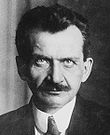German federal election, November 1932
|
|
|||||||||||||||||||||||||||||||||||||||||||||||||||||||||||||||||||||||||||||||||||||||||||||||||||||||||||
|
|||||||||||||||||||||||||||||||||||||||||||||||||||||||||||||||||||||||||||||||||||||||||||||||||||||||||||
|
|||||||||||||||||||||||||||||||||||||||||||||||||||||||||||||||||||||||||||||||||||||||||||||||||||||||||||
|
|||||||||||||||||||||||||||||||||||||||||||||||||||||||||||||||||||||||||||||||||||||||||||||||||||||||||||
None (Schleicher appointed shortly afterward)
Federal elections were held in Germany on 6 November 1932. They saw a significant drop in votes for the Nazi Party and increases for the Communists and the national conservative DNVP. It was the last free and fair all-German election before the Nazi seizure of power on 30 January 1933, as the following elections of March 1933 were already accompanied by massive suppression, especially against Communist and Social Democratic politicians. The next free election was not held until August 1949 in West Germany; the next free all-German elections took place in December 1990 after reunification.
The results of the November 1932 election were a great disappointment for the Nazis. Although they emerged once more as the largest party by far, they had fewer seats than before, and failed to form a government coalition in the Reichstag parliament. So far Chancellor Franz von Papen, a former member of the Catholic Centre Party, had governed without parliamentary support relying on legislative decrees promulgated by Reich President Paul von Hindenburg according to Article 48 of the Weimar Constitution. However, on 12 September 1932 Papen had to ask Hindenburg to dissolve the parliament in order to preempt a motion of no confidence tabled by the Communist Party, which was expected to pass (since the Nazis were expected to vote in favour, as they also desired new elections). Thus, the election of November 1932 was held following this dissolution of parliament in September. The DNVP, which had backed Papen, gained 15 seats as a result.
...
Wikipedia






